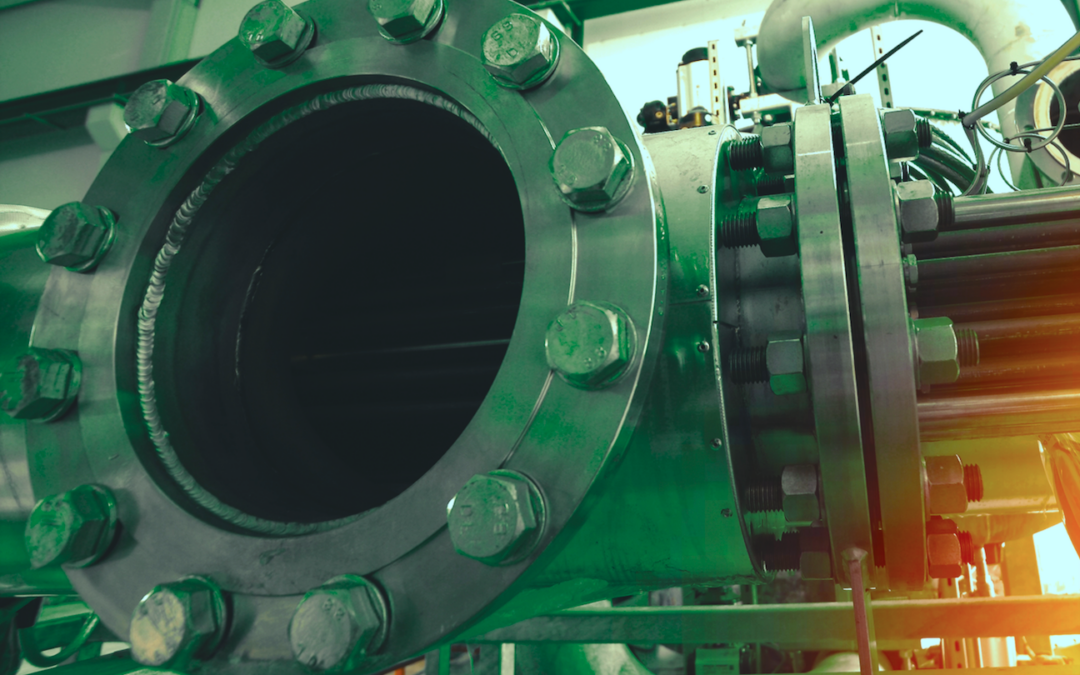Several of the optimum reference states (ORS) that I defined for precision maintenance in a Dec. 22, 2019, article relate to getting threaded fasteners, i.e., nuts and bolts, tight without stripping them. Proper tensioning of threaded fasteners is critical to our efforts to reduce machinery vibration. Mechanical looseness is a major source of vibration that leads to accelerated wear, failure, high maintenance cost, and poor production reliability.
Click Here to Read the Dec. 22, 2019 Article
“Optimum Reference States for Precision Maintenance”
When we think of tightening a threaded fastener, we usually think of torque, e.g. a torque wrench. First, let’s address the basics. Tension is what’s required to secure a threaded fastener and create a good, tight joint.
Think of the bolt as a spring. When we tighten the bolt, it elongates, which like a spring, creates tension. As long as we tighten the fastener within its elastic range, the bolt, again like a spring, will return to its normal length when the tension is relieved when its loosened, and it can be reused. Of course, if the elastic limit of the steel is exceeded, the bolt is permanently (or plastically) deformed and can’t be reused. In extreme cases of over-tensioning, the steel will yield and fatigue—which means stripping.
Torque, on the other hand, is the radial force applied to the bolt. We normally refer to torque in foot-pounds (lb-ft), inch-pounds (lb-in) or Newton-meters (N-m). One lb-ft equals 12 lb-in and one N-m equals 0.738 lb-ft.
To provide a mental image, if you apply one pound of force one inch from the rotating center of a bolt, you have one lb-in. If you apply the same one pound of force at the end of a 36″ wrench, you have 36 lb-in of torque, or three lb-ft.
Most bolt tightening tables specify a torque value because its easy to measure in the field, but tension is not. These tables estimate the relationship between torque and tension. You’ll notice that they typically specify two values for a given fastener size, type, and grade: lubricated or unlubricated. This is where things go sideways. Much of the torque force is lost to friction—most of which occurs at the threads and where the nut-face turns on the washer. As much as 90% of the torque force is lost to friction.
The specified torque values for unlubricated fasteners is a “fudge factor. It’s guesswork. With my clients, I recommend against using unlubricated torque values. Rather, I recommend using a high-quality thread lubricant, such as a molybdenum disulfide product manufactured by Loctite or others.
Threaded-fastener integrity is too important to leave to chance. Require that all nuts and bolts be suitably lubricated (preferably with a molybdenum disulfide bolt lubricant) and that they be tightened to the full lubricated torque value, using a properly calibrated torque wrench.TRR
VIDEO SUGGESTION
Our friends at Vemont-based Applied Bolting (appliedbolting.com), manufacturers of direct tension indicators (DTSs), have created a great YouTube video that clearly demonstrates the difference between torque and tension. Using a Skidmore-Wilhelm hydraulic load cell, which directly measures tension, and a calibrated electric torque wrench, they compared a lubricated “fresh from the keg” 7/8” A325 nut and bolt with the same nut and bolt in “shop condition.” The results were staggering. Applying the same torque, they achieved less than one-third of the tension with the shop condition sample as they did with they achieved with the fresh from the keg sample. Watch this very compelling video for free by clicking on the following link:
https://www.youtube.com/watch?v=O96AUlIBkU8
ABOUT THE AUTHOR
Drew Troyer has 30 years of experience in the RAM arena. Currently a Principal with T.A. Cook Consultants, he was a Co-founder and former CEO of Noria Corporation. A trusted advisor to a global blue chip client base, this industry veteran has authored or co-authored more than 250 books, chapters, course books, articles, and technical papers and is popular keynote and technical speaker at conferences around the world. Drew is a Certified Reliability Engineer (CRE), Certified Maintenance & Reliability Professional (CMRP), holds B.S. and M.B.A. degrees, and is Master’s degree candidate in Environmental Sustainability at Harvard University. Contact him directly at 512-800-6031 or dtroyer@theramreview.com.
Tags: precision maintenance, fasterners, lubrication, alignment, balancing, vibration



